

Project Overview
案例概述
Xiaocaopo Village in Donggang District, Rizhao City, places high importance on the ecological revitalization of the countryside. Guided by Party building efforts, the village has demonstrated unwavering commitment to fostering a green, low-carbon rural environment with tangible actions. A series of initiatives have been implemented, including: Household accessibility projects; Separate sewage and rainwater drainage systems; Beautiful courtyard campaigns; Waste classification programs; Smoke-free village initiatives; PV-integrated electric heating systems. These efforts have significantly improved the village’s ecological environment and enhanced residents' sense of happiness and fulfillment. Notably, the village’s technology for recyclable waste reuse has been recognized as a national-level exemplary case, while its sewage treatment and reuse technology received the Outstanding Promotion Award in Shandong Province. The village has also been honored with multiple titles, including:National Beautiful and Livable Village Short Video Competition Award; Provincial-Level Civilized Village; Provincial-Level Beautiful Village Demonstration Award; Provincial-Level Sanitary Village; Municipal-Level Advanced Primary-Level Party Organization. These achievements reflect Xiaocaopo Village’s integrated and innovative approach to sustainable rural development.
日照市东港区小草坡村高度重视乡村生态振兴工作,以党建为引领,用拳拳之劲厚植绿色低碳乡村的亮丽底色。先后开展了户户通、雨污分流、美丽庭院、垃圾分类、无烟村庄、光伏+电取暖等一系列的工作,村庄生态环境明显改善,群众幸福感明显增强,易腐垃圾再利用技术获得国家级典型案例、污水处理技术及污水处理再利用获得山东省优秀推广案例,被授予全国美丽宜居短视频擂台赛村庄、省级文明村、省级美丽乡村示范村、省级卫生村、市级先进基层党组织等荣誉称号。

Company/Organization Profile
机构简介
Xiaocaopo Village is located in Taoluo Town, known as the "Land of Fish and Rice" in Rizhao City. It comprises 108 households with a population of 302, including 25 Party members. The village enjoys a favorable location and convenient transportation. In recent years, Xiaocaopo Village has carried out a series of initiatives, including: Household accessibility projects; Separate sewage and rainwater drainage systems; Beautiful courtyard campaigns; Waste classification programs; Smoke-free village initiatives; PV-integrated carbon fiber heating systems. The village has been honored with titles such as: National Beautiful and Livable Village Short Video Competition Award; Provincial-Level Civilized Village; Provincial-Level Beautiful Village Demonstration Award; Provincial-Level Sanitary Village; Municipal-Level Advanced Primary-Level Party Organization. These efforts have significantly improved the village’s ecological environment and enhanced residents' sense of happiness and fulfillment.
小草坡村位于日照市鱼米之乡涛雒镇,共有 108 户住户,人口302人,其中党员25名。村庄区位优越,交通便捷。近年来,小草坡村先后开展了户户通、雨污分流、美丽庭院、垃圾分类、无烟村庄、光伏+碳纤维采暖等一系列的工作,被授予全国美丽宜居短视频擂台赛村庄、省级文明村、省级美丽乡村示范村、省级卫生村、市级先进基层党组织等荣誉称号。村庄生态环境明显改善,群众幸福感明显增强。

Project Outcome
项目成果
1. A Pioneer in Sustainable Water Management
In 2016, following the success of its toilet renovation project, Xiaocaopo Village became the first in the city to launch an innovative rainwater and sewage separation system. The project was implemented through a unified approach—from design and procurement to construction and inspection—and also included upgrades to drinking water infrastructure and green street development.Facing budget constraints, the village turned challenge into opportunity: local Party members and residents volunteered for excavation, pipeline installation, and welding. This collective effort not only saved RMB 120,000 but also strengthened community spirit and ownership.Today, all wastewater from households—including kitchens, bathrooms, and toilets—flows through underground pipes, making open sewage a thing of the past. Rainwater is channeled separately above the sewage lines. The system uses eco-biological treatment methods to efficiently process collected wastewater.This project was named a Provincial Best Practice Case and received a Municipal Innovation Award. Recently, the village expanded the system to include treated wastewater reuse for irrigation—turning waste into resource and closing the loop on sustainable water management.
1. 率先完成雨污分流改造。2016年小草坡村在改厕后又在全市率先创新实施了雨污分流工程建设,统一设计、统一采购、统一施工、统一验收,完成自来水水改造和街道硬化绿化,当时由于资金不足,发动党员、群众参加义务劳动,管道土方开挖和回填都由村民义务出工,管道铺设、焊接由党员骨干技术力量义务施工,形成“人人参与、人人建设、人人守护”良好氛围,仅此一项节省资金十二万元,工程验收合格后开始运营,全村村民的厕所、厨房、卫生间的污水全部汇入地下管道,地面难寻污水踪迹,雨水在污水管道上面流淌,所有收集的污水利用生物生态污水处理技术,真正实现了雨污分流,此工程被选入全省优秀推广案例,获得了市科技局创新奖;今年在原有污水处理的基础上,又发展了污水净化处理再利用工程,真正实现了污水处理还田再利用。
2. Eco-Friendly Sewage Treatment Protecting Rural Waters
Xiaocaopo Village treats its domestic sewage through a natural, integrated system combining anaerobic tanks, stabilization ponds, and constructed wetlands. The entire village is covered by separate rainwater and sewage pipelines, ensuring that no wastewater enters the natural environment untreated.The system processes 40 tons of sewage daily and achieves a treatment rate of nearly 100%. Water quality is tested monthly, and the facilities are carefully maintained—with annual sludge removal, seasonal harvesting of aquatic plants, and timely clearing of residues and blockages.All household sewage is collected underground, making the village visibly cleaner and free of stagnant water or odors. Rainwater is cleanly diverted, and all sewage is treated through ecological processes.This low-cost, sustainable model has been recognized as a Provincial Exemplary Case and showcases how rural communities can protect their water resources through nature-based solutions.
2. 生态模式治理生活污水。采用厌氧池+稳定塘+人工湿地生态污水处理技术,建设了雨污分流管道、厌氧池、稳定塘(缺氧+好氧)、人工湿地工程。工程覆盖整个村庄,设计处理生活污水量40吨/天,农村生活污水处理率接近 100%。根据水质变化,每月对污水进水和出水水质进行化验检测,每年对厌氧池清掏1次,水生植物生长旺季及时收割,冬季及时清理水生植物残体,雨季疏通污水管道。村民的厕所、厨房、卫生间的污水全部汇入地下管道,地面难寻污水踪迹,雨水在污水管道上面流淌,真正实现了雨污分流,生态治理,工程入选全省优秀推广案例。
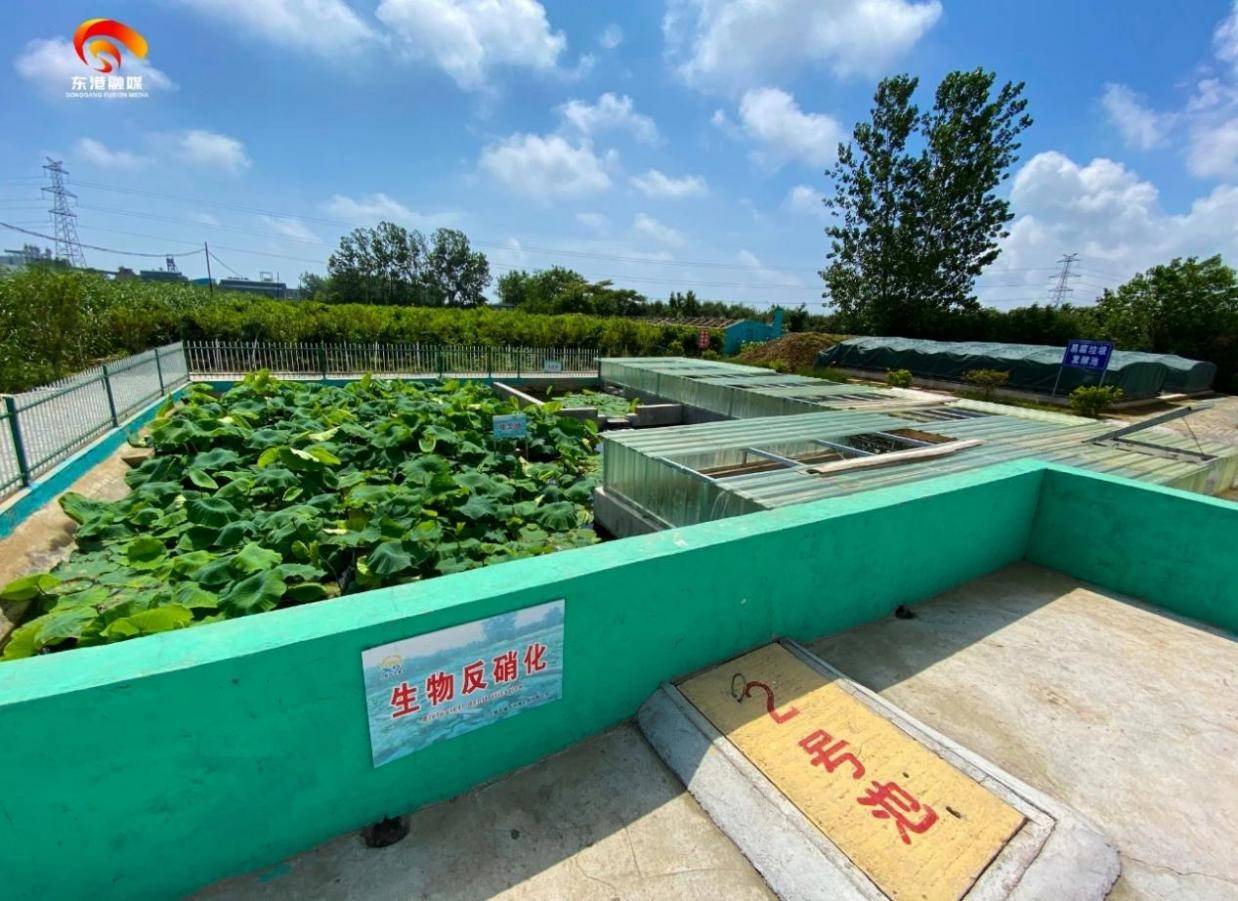
3. Leading the Way in Waste Sorting Innovation
In 2019, Xiaocaopo Village embraced a pilot waste classification system, becoming a model in rural sustainability. The program introduced five waste categories—hazardous, recyclable, compostable, landfill, and other—and two collection methods: scheduled door-to-door pickup and self-delivery to designated sites. A unique community-driven approach, the “1+2+4 Party Building” model, was launched to ensure effectiveness and participation. To encourage lasting change, the village formed a dedicated cleaning team and deployed waste collection vehicles. Local party members were organized into 10 rotating supervision teams, working alongside sanitation staff to guide households. Regular monitoring—including weigh-ins and weekend educational visits—supported the “household sorting → group cleaning → town collection → district transfer → city processing” system. Organic waste such as food scraps and crop straw is sorted, crushed, and composted under loess seals, producing natural fertilizer reused by farmers. This initiative gained national recognition in January 2022 as a Top Case for rural organic waste recycling. Today, every household participates, making Xiaocaopo a celebrated example of a “Beautiful Village.”
3. 先行先试推广垃圾分类。2019年在小草坡村积极响应垃圾分类号召,试点推行生活垃圾分类和有机废弃物资源化利用,即垃圾分为有害垃圾、可回收垃圾、可堆肥垃圾、可填埋垃圾、其他垃圾5大类以及村居定时定点上门分类回收、农户定时定点自主分类投放2大模式,在全市第一个创新探索“1+2+4党建”工作机制开展垃圾分类工作。为了推进习惯养成、持之以恒,根据人口数量和经济条件,经主题党日会研究决定,小草坡村组建了村居保洁队伍,配备收集运输车,把党员分成10个小组,每组组长由两委成员轮岗担任,跟随保洁员就分类情况进行督导,采用村居“定时定点上门分类收集”和“定时定点自主分类投放”两种收集模式,运用保洁员和垃圾中转站“两杆秤”, 在每个周六、日和环卫工人一起入户指导监督, “户分类、组保洁、镇集运、区转运、市处理”的农村生活垃圾分类处理体系不断完善,以点带面推进垃圾分类全覆盖。农村有机废弃物资源化利用主要处理厨余剩饭剩菜秸秆等易腐垃圾,有机废弃物经分拣、破碎、混合等预处理后起堆,并用黄土封堆进行堆沤,产生的土杂肥,村民还田利用,在2022年1月小草坡村农村易腐垃圾处理入选全国农村有机废弃物资源化利用典型案例,现如今,小草坡村的垃圾分类已经走进家家户户,成为远近知名的“美丽乡村”。
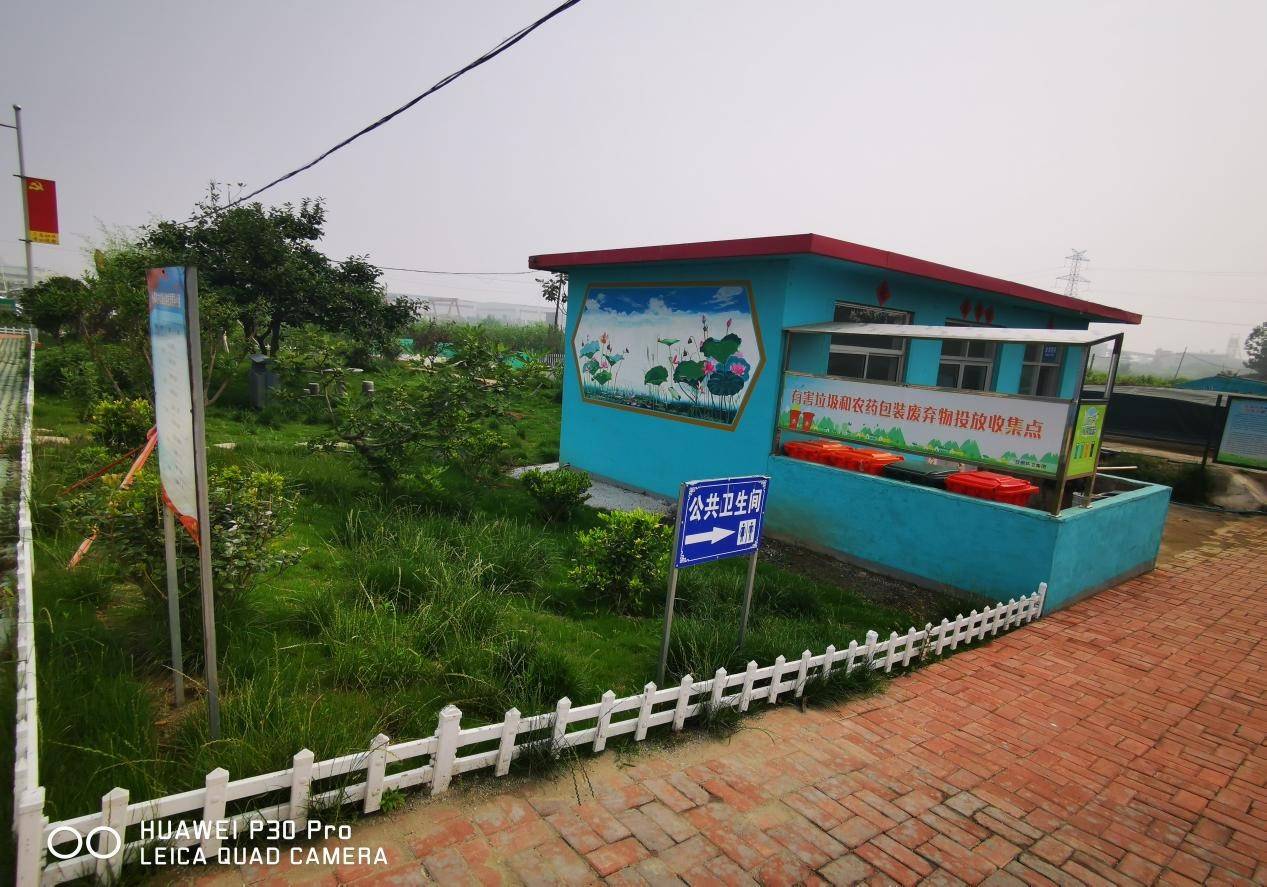
4. Turning Waste into Resource: Circular Systems in Action
Xiaocaopo Village established an organic waste treatment station through collaborative funding—village contributions, corporate sponsorships, and government support. Spanning 450 square meters, the facility is managed by a third party with public funding and requires only one staff member. Operating at approximately RMB 130 per ton, it processes 150 kg of compostable waste daily.Local kitchen waste, vegetable residues, and farm straw are treated through sorting, crushing, mixing, and sealed composting. The finished compost is sieved and matured onsite, yielding around 20 tons of organic fertilizer per year used to enrich soil for vegetables and fruits.This system achieves 60% waste resource utilization and 100% non-hazardous treatment. It not only improves soil health and living conditions but also helps preserve the village’s natural and cultural charm. In early 2022, this project was selected as a National Exemplary Case for organic waste reuse.
4. 开展农业废弃物综合利用。通过村集体自筹、企业赞助、政府补助等投资方式,建立易腐垃圾处理站,占地面积450平方米,由第三方负责运维管护,费用由政府承担,用工1人,综合运行成本约130元/吨,设计日处理易腐垃圾 150kg。村庄厨余垃圾,尾菜、农作物秸秆有机废弃物经分拣、破碎、混合等预处理后起堆,并用黄土封堆进行堆沤。产出物经筛分后运至田头进一步腐熟,年可产“土杂肥”约20吨,用于蔬菜、水果种植。生活垃圾资源化利用率达到60%,无害化处理率达到100%,既改善了耕地土壤,又改善村民生活环境,为打造“望得见山、看得见水、记得住乡愁”的美丽村居奠定了坚实基础。农村易腐垃圾处理模式在 2022年 1月入选全国农村有机废弃物资源化利用典型案例。
5. Green Growth Driving Sustainable Revitalization
In 2022, Xiaocaopo Village launched the Guoying Agricultural Specialty Cooperative under a community cooperative model. Capitalizing on its local yellow peach industry, the cooperative integrated solar energy projects—“Yellow Peaches + Solar”—adding nearly RMB 100,000 to village revenues in their first year.The same year, a renewable energy cooperative was formed to promote clean heating via solar power and electric heating systems. Rooftop solar panels were installed across homes, paired with carbon fiber-based hydro-electric heating units. This transition allows villagers to access zero-carbon heating while earning extra income from surplus solar power—eliminating indoor pollution from coal and reducing costs.To date, 101 households have joined the program. The village council also adopted green office practices. Beyond environmental benefits, the project delivers significant economic returns: it offsets electricity costs and is projected to raise collective village income by over RMB 100,000 and individual earnings by RMB 300,000 yearly.This success reflects a true triple win: effective local leadership, tangible benefits for residents, and sustained collective growth—showcasing a scalable, participatory model for eco-friendly rural development.
5. 绿色发展助力生态振兴。2022年,小草坡村积极响应“党支部领办合作社”的倡导,成立了日照市东港区果盈农业专业合作社,以该村黄桃特色产业为基础,实施黄桃+光伏战略,仅光伏发电村集体增收近10万元。同年成立了新能源合作社,依托良好的环境基础和创新氛围,积极探索开展“光伏+电取暖”,整村推进“光伏+电代煤”清洁取暖,创新在村民屋顶上安装太阳能光伏板,家里安装碳纤维远红外水电一体取暖设备,让村民充分享受零碳清洁取暖和全年太阳能发电增收的便利生活,既消除了村民冬季烧煤的安全隐患,又能实现低成本零碳清洁供暖。目前,全村共有101户村民已签约同意进行“光伏+电代煤”改造,村委办公室实现绿色低碳办公,“光伏+电代煤”不仅能够实现清洁取暖,其带来的经济效益也颇为客观,除了能抵扣电费,还预计每年增加村集体收益10万余元,村民收益近30万元,真正实现了“支部有作为,群众得实惠,集体有收益”三方共赢,实现产业富民、科技兴村、生态和谐、全面发展,激活乡村振兴的“一池春水”,逐步搭建起“能推广、可持续、共参与”的“绿色低碳乡村”样板。
Project Highlights
项目亮点
Xiaocaopo Village has achieved sustainable pollution reduction and carbon mitigation by upgrading its infrastructure, with a focus on domestic sewage treatment and waste classification. Meanwhile, the village continues to explore eco-friendly development models, cultivating specialty industries under the "One Village, One Product" initiative and promoting rural ecotourism. These efforts have created a strong synergy between environmental improvement and economic revitalization.In recognition of its achievements, the village was named a National Typical Case for Organic Waste Resource Utilization by the Ministry of Agriculture and Rural Affairs in 2021, and recognized as a Shandong Provincial Typical Case for Urban and Rural Waste Classification in 2023.
小草坡村通过完善基础设施、聚焦生活污水治理与垃圾分类,促进可持续减污降碳;同时持续探索生态发展模式,培育“一村一品”特色产业、打造乡村生态旅游亮点,实现环境改善与产业振兴协同增效。2021年被农业农村部评为有机废弃物资源化利用典型案例,2023年获评山东省城乡生活垃圾分类典型案例。
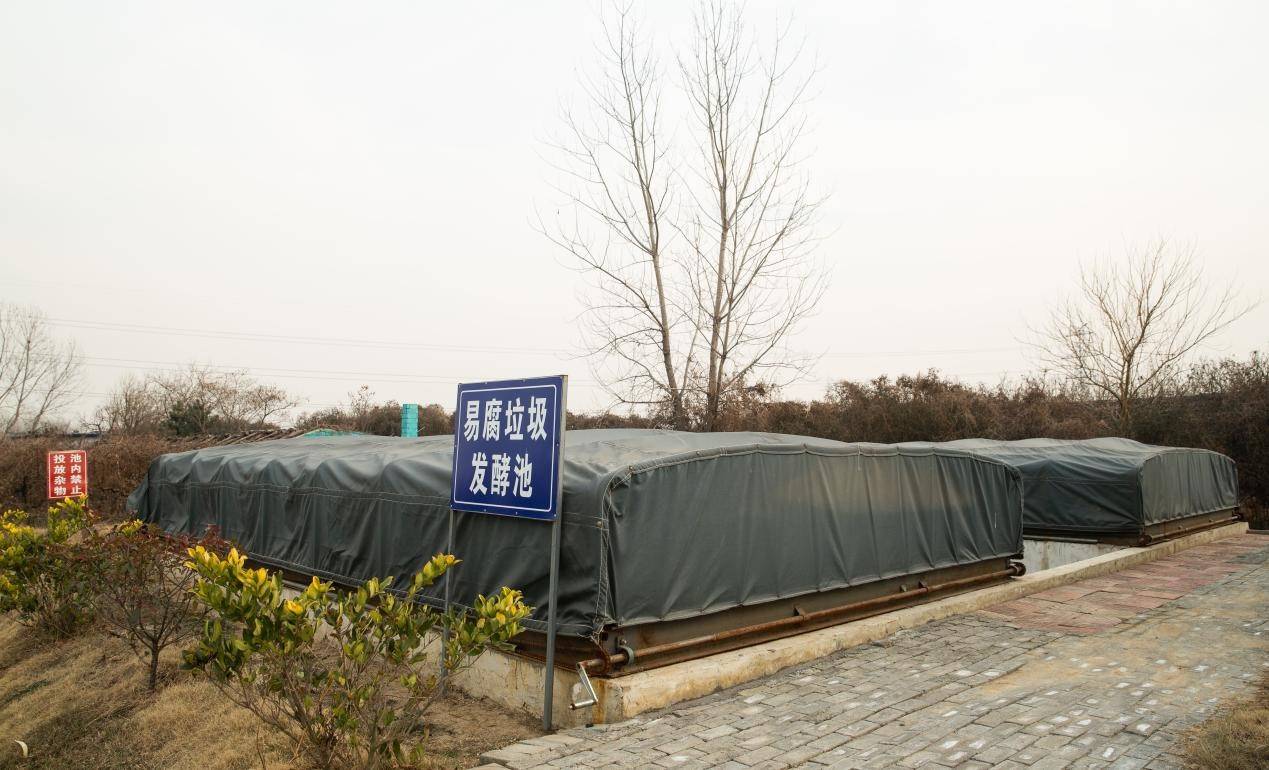
Project Implementation
项目实施
(1) Investing in Infrastructure for Sustainable Transformation
Since 2014, Xiaocaopo Village has invested a total of RMB 2.55 million in infrastructure upgrades, including a renewed tap water system and the paving of 11 streets totaling 5,161.9 m². Over 2,000 trees and shrubs were planted, putting an end to the days of “dust in dry weather and mud when it rains.”In 2016, the village implemented toilet refurbishment in 99 households and a RMB 300,000 project to separate rainwater and sewage pipelines, adopting eco-friendly technology to eliminate black and odorous water bodies.By 2019, a RMB 100,000 waste sorting system had reduced landfill waste by half, with organic waste composted and returned to farmland. The same year, a village library (RMB 100,000) and greening/lighting projects (RMB 500,000) were completed.In 2020, a RMB 550,000 solar power station was built at the village committee office, creating a circular model where electricity is first used locally, with surplus power sold to the grid.
(一)加大资金投入完成基础设施改造。小草坡村自2014年起累计投入255万元实施基础设施升级,完成自来水改造和11条街巷5161.9平方米硬化,栽植2000余棵绿化苗木,终结了“晴天土雨天泥”的历史;2016年同步推进99户卫生改厕与30万元雨污分流工程,采用生态处理技术消除黑臭水体;2019年投资10万元建立垃圾分类体系实现垃圾减半还田,同年建成10万元乡村书屋和50万元村庄绿化亮化工程;2020年投入55万元建设村委光伏电站,形成“自发自用+余电并网”的环保增收模式。
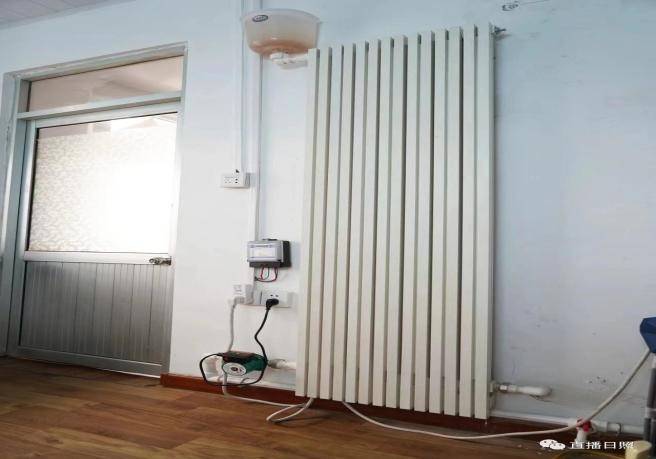
(2) Nature-Based Solutions for Sewage Treatment
In 2016, following the toilet renovation initiative, Xiaocaopo Village pioneered a separate sewage and rainwater drainage system. Through the “Four Uniforms” approach (uniform design, procurement, construction, and inspection) and “Three Mobilizations” (residents volunteering labor, technically skilled Party members assisting construction, and whole-community participation in maintenance), the project saved RMB 120,000 in labor costs alone.An integrated ecological treatment system—using anaerobic tanks, stabilization ponds, and constructed wetlands—was established with a daily capacity of 40 tons, achieving nearly 100% domestic sewage treatment coverage. Monthly water quality testing ensures effective operation, making open sewage discharge a thing of the past.
The project was named a Provincial Best Practice Case and won a Municipal Science and Technology Innovation Award. In 2025, the system was further upgraded to allow treated water to be purified and reused for irrigation, enabling a full “treatment–purification–reuse” ecological cycle.
(二)生态模式治理生活污水。2016年,小草坡村在完成改厕后,创新实施雨污分流工程,通过“四个统一”(设计、采购、施工、验收)和“三个发动”(群众义务劳动、党员技术施工、全民共同守护),仅村民义务出工就节省资金12万元。采用“厌氧池+稳定塘+人工湿地”生态处理技术,建成日处理40吨的污水处理系统,实现全村生活污水处理率近100%。通过每月水质检测确保处理效果,使村庄彻底告别污水横流现象。该工程先后获评全省优秀推广案例和市级科技创新奖,2025年又升级发展出污水净化再利用系统,实现“处理-净化-还田”的生态循环模式。
(3) Pilot Program in Waste Classification and Organic Waste Recycling
The village introduced a “Party Building + Waste Classification” model, implementing full coverage through a “1+2+4” mechanism: 1 Party branch providing leadership, 2 collection modes (door-to-door and self-delivery), and a 4-level responsibility system.A professional cleaning team was established with dedicated waste collection vehicles, operating under a dual-track system of scheduled pickup and designated drop-off points. A five-step chain—household classification → group cleaning → town collection → district transfer → city processing—was put in place.For organic waste, a treatment station was built through tripartite investment (village collective + enterprise + government). Kitchen waste and crop straw are sorted, crushed, and composted into fertilizer for farms.This model was recognized as a National Typical Case for Rural Organic Waste Resource Utilization in 2022, making the village a demonstration site for Beautiful Village initiatives.
(三)试点推行垃圾分类和有机废弃物资源化利用。创新推行“党建+垃圾分类”模式,通过“1+2+4”工作机制(1个党支部引领,2种收集模式,4级责任体系)实现垃圾分类全覆盖。组建专业保洁队伍,配备分类运输车,建立“定时上门收集+定点自主投放”双轨机制;构建“户分类-组保洁-镇集运-区转运-市处理”五级处理链条。在有机废弃物处理方面,采取“村集体+企业+政府”三方筹资模式建设处理站,将厨余垃圾、秸秆等经分拣破碎后堆沤成肥还田。2022年入选全国农村有机废弃物资源化利用典型案例,现已成为“美丽乡村”建设示范样板。
(4) Green Development Drives Ecological Revival
In 2022, Xiaocaopo Village launched a “Dual Cooperative” model: The Guoying Agricultural Specialty Cooperative developed a yellow peach industry complemented by photovoltaic (PV) projects, increasing collective annual income by RMB 100,000. A New Energy Cooperative promoted a “PV + Coal-to-Electricity” clean energy system.Rooftop solar panels and carbon fiber far-infrared heating systems were installed in 101 households, replacing coal heating. The system supports a virtuous cycle: electricity is first used locally, and surplus power is sold, generating an annual combined income of RMB 400,000.This approach delivers ecological, safety, and economic benefits—offering a replicable and sustainable green template for rural revitalization.
(四)绿色发展助力生态振兴。2022年,小草坡村创新实施“双合作社”驱动模式:一方面成立果盈农业专业合作社,发展黄桃特色产业与光伏互补项目,实现村集体年增收10万元;另一方面组建新能源合作社,推行“光伏+电代煤”清洁能源系统。通过安装屋顶光伏板和碳纤维远红外取暖设备,使101户村民告别燃煤取暖,形成“发电自用-余电创收”的良性循环,年综合收益达40万元,同步实现生态、安全、经济效益,成功打造出可复制、可持续的乡村振兴绿色样板。
Project Impact & Sustainability
项目影响力、可推广性与可持续性
From the smart pulse of separated drainage to the eco-cycle of waste sorting; from the golden current flowing from solar panels to the sweet harvest of yellow peach orchards—Xiaocaopo Village has leveraged RMB 2 million into green mountains and clear waters. Plane trees now shade its streets, and a village library illuminates minds.The sweat of Party members, shovels in hand, built a water management model now replicated across the province.Kitchen waste, composted over time, has nourished soil that gained national recognition—a testament to turning sustainability into shared prosperity.
从雨污分流的智慧脉动,到垃圾分类的生态循环;从光伏板流淌的金色电流,到黄桃林结出的甜蜜希望。小草坡村用200万元撬动绿水青山,让法桐的绿荫丈量街巷,让书屋的灯光点亮思想。党员带头挥锹的汗水,凝成全省推广的治水样本;厨余堆肥发酵的时光,酿出全国瞩目的沃土芬芳。
(Using AI translation)
(使用AI翻译)

零废弃学校建设之厨余垃圾篇
10-24 · 来源:中国浙江省宁波市鄞州第二实验中学 · 作者:中国浙江省宁波市鄞州第二实验中学
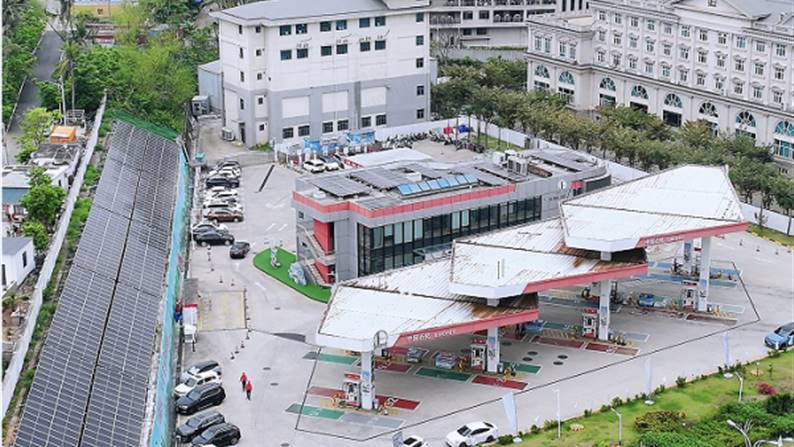
能源至净,生活至美,积极打造碳中和
10-24 · 来源:中国石化销售股份有限公司海南海口石油分公司 · 作者:中国石化销售股份有限公司海南海口石油分公司

无锡中瑞低碳生态城
10-23 · 来源:无锡中瑞低碳生态城 · 作者:无锡中瑞低碳生态城